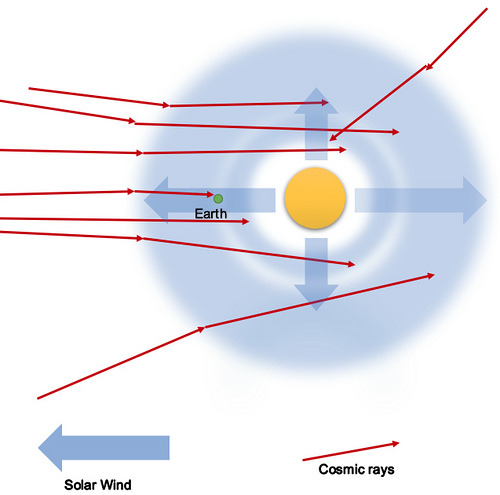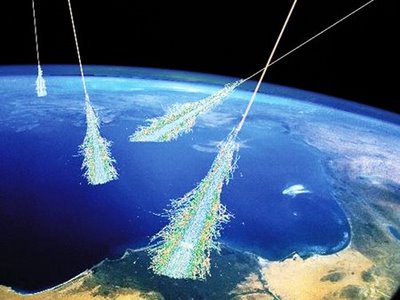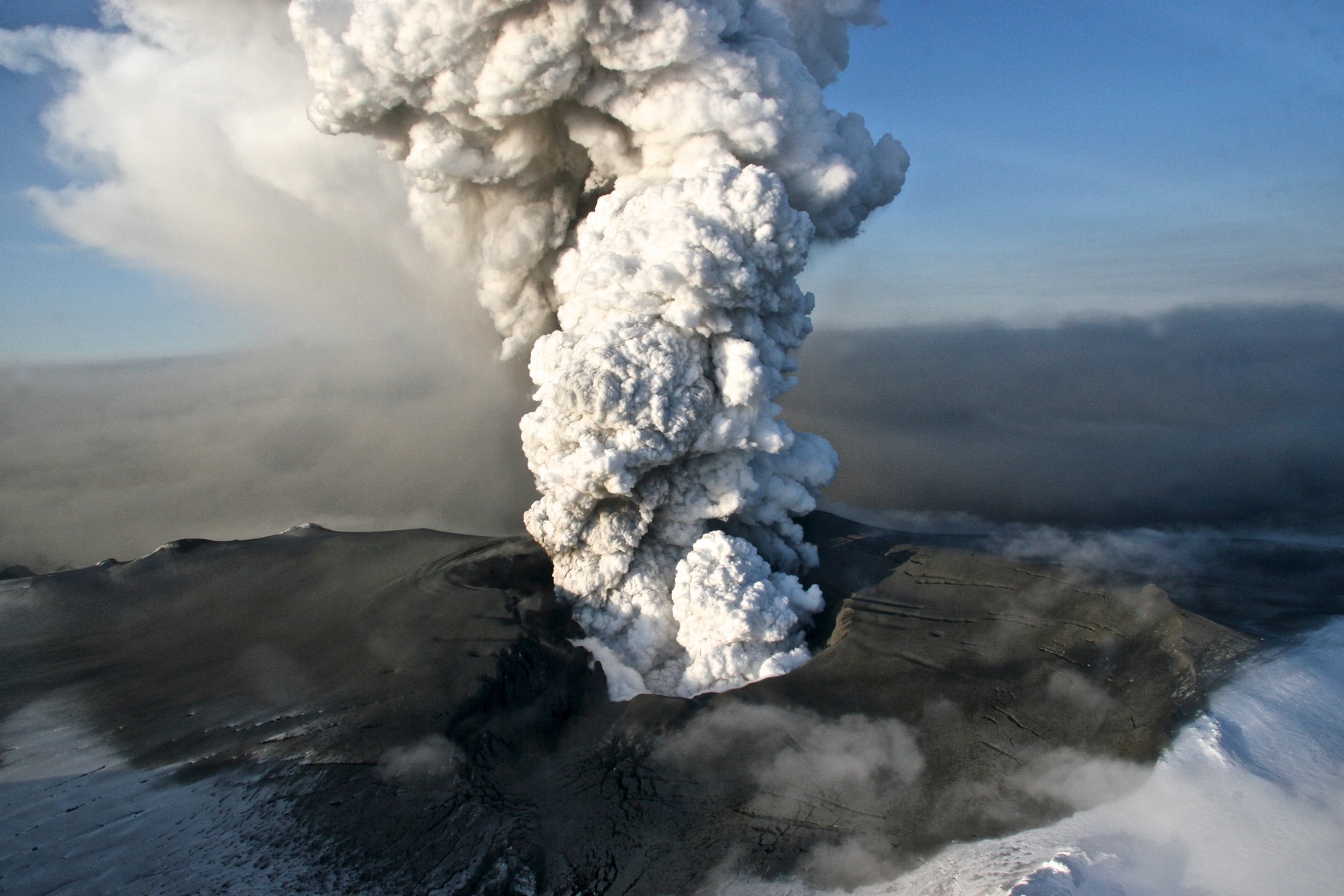File this one under “As If We Don’t Have Enough to Worry About.”
We could be entering an age of revolution around the world, and I blame the sun.
Solar Maxima/Solar Minima #
The sun goes through ~11 year cycles of high activity (solar maxima with lots of solar flares and sunspots) and low activity (solar minima with few solar flares and sunspots). NASA projected April 2020 (+/- 6 months) as the trough of the current cycle, number 24.
(According to David Archibald on WattsUpWithThat, we entered Cycle 25 about April 22.)
More importantly, these solar cycles have become increasingly weaker for about forty years. Scientists believe the sun is going into an extended period of low activity. This would be consistent with a larger solar cycle: Grand Solar Maxima (several consecutive cycle of very high solar activity) and Grand Solar Minima (several consecutive cycles of low solar activity). With Cycle 23, we entered a Grand Solar Minimum.
The last period of weak cycles occurred from 1650 to about 1715, triggering what’s known as the Little Ice Age. That ice age changed history dramatically, affecting weather in Europe until the late 1800s. Most of what we think of as Dickensian London (snow, cold, lack of food) comes from that era. Solar minima are associated with crop failures, floods, heavy cloud cover, harsh winters, and cool, sunless summers.
Some people think these extended periods of high solar activity and low solar activity influence earth’s atmospheric temperature. But most scientists believe the direct effect of fluctuations in solar activity have a minimal direct effect on temperatures. A growing body of research, though, indicates these larger cycles have a profound indirect effect.
It’s not the heat from the sun that changes climate, it’s the solar winds.
Solar Winds and Cosmic Rays #
Cosmic “rays” (which are actually particles) originate outside the solar system and move like rivers through the universe. These rivers of cosmic particles are full of charged ions of helium and other low-atomic weight elements, and gamma rays.
Solar winds deflect a lot of these cosmic rays away from our solar system. During solar maxima, very few cosmic rays hit the earth’s atmosphere, but during minima, many rays hit the earth. It looks like this during a solar maximum:

Solar Maximum
Solar winds shield the earth from cosmic rays.
And, like this during a solar minimum:

Solar Minimum
Cosmic rays pelt the earth during a solar minimum.
Grand Solar Minima allow prolonged periods of cosmic ray penetration, allowing the effects of cosmic rays to have an outsized effect on earth.
Which leads us to the next question: what effects do cosmic rays have on earthly things?
Well, among other things, they increase human radiation exposure, they cause an increase in cloud formation, and they seem to trigger heavy volcanic activity.
Solar Winds, Cosmic Rays, and Cloud Formation #
Earlier, we said that the effect of sun activity on earth’s temperature was indirect. The most well-documented and studied indirect effect is on cloud formation.
Researchers at the University of Denmark have demonstrated how cosmic rays influence cloud formation. From Science Daily:
The new results reveal, both theoretically and experimentally, how interactions between ions and aerosols can accelerate the growth by adding material to the small aerosols and thereby help them survive to become cloud condensation nuclei. It gives a physical foundation to the large body of empirical evidence showing that Solar activity plays a role in variations in Earth’s climate. For example, the Medieval Warm Period around year 1000 AD and the cold period in the Little Ice Age 1300-1900 AD both fits with changes in Solar activity.
When the sun is active, the earth is hotter, but not because of direct sunlight. That actually changes little. Instead, the solar activity diminishes cloud formation by deflecting cosmic rays. Thus, high solar activity is associated with draught, low activity with clouds and rain.
Dr. Roy Spencer of the University of Alabama said in his book The Great Global Warming Blunder:
The most obvious way for warming to be caused naturally is for small, natural fluctuations in the circulation patterns of the atmosphere and ocean to result in a 1% or 2% decrease in global cloud cover. Clouds are the Earth’s sunshade, and if cloud cover changes for any reason, you have global warming — or global cooling.
But that’s only half the effect of solar winds. Maybe not even half.
Solar Winds, Cosmic Rays, and Volcanoes #
Scientists dispute the University of Denmark’s conclusion that increased cloud cover causes variations in earth temperature. That’s because, if true, global warming hysteria would be exposed as a fraud. The “official” scientists also deny any correlation between Grand Solar Minima/Maxima and earth’s climate variations, even the perfect correlation is historical fact. (Remember, an expert is someone who can’t be fired for being wrong 100% of the time.)

Cosmic rays hitting the earth (illustration)
Instead, these “official” experts claim that the little ice ages just happened to occur during Grand Minima, but the real trigger events were conveniently timed massive volcanic eruptions.
Volcanic eruptions fill the atmosphere with those aerosols necessary for cloud formation. Plus, they deflect sun rays on their own. Their combined effect of deflection and cloud formation leads to cold periods on the earth’s surface.
Let’s stipulate that volcanoes, not low sun activity, directly cause the increased cloud cover associated with little ice ages. And increased cloud cover always coincides with Grand Solar Minima. We have to ask: why are there always massive volcanic eruptions early in Grand Solar Minima?
Japanese researchers provide an answer: intergalactic cosmic rays.
In a paper with awesome title: Explosive volcanic eruptions triggered by cosmic rays: Volcano as a bubble chamber, scientists from Musahino Art University, Japan Atomic Energy Agency, and the Japanese National Institute of Polar Research conclude that cosmic solar rays accelerate water-vapor bubble formation inside volcanoes, similarly to the way they cause cloud formation in the atmosphere.
It’s important to remember that physical obstacles on earth do not stop cosmic rays. Like X-rays at the doctor’s office, these tiny particles and rays go right through people, mountains, granite, etc.
From the paper’s abstract:
It is well known that the cosmic-ray flux is negatively correlated with solar magnetic activity, as the strong magnetic field in the solar wind repels charged particles such as galactic cosmic rays that originate from outside of the solar system.
There, we have confirmation that low solar activity leads to increased penetration of cosmic rays. The paper then turns to the coincidence of solar minima and volcanic eruptions:
The strong negative correlation observed between the timing of silica-rich eruptions and solar activity can be explained by variations in cosmic-ray flux arising from solar modulation.
Now, we get into the chemistry of how cosmic rays trigger volcanoes. (This is extremely technical. Read it carefully, twice.) I’ve added links to the definitions of some of the more unusual words.
Because silica-rich magma has relatively high surface tension (similar to 0.1 Nm(-1)), the homogeneous nucleation rate is so low that such magma exists in a highly supersaturated state without considerable exsolution, even when located relatively close to the surface, within the penetration range of cosmic-ray muons (1-10 GeV). These muons can contribute to nucleation in supersaturated magma, as documented by many authors studying a bubble chamber, via ionization loss. This radiation-induced nucleation can lead to the pre-eruptive exsolution of H2O in the silica-rich magma.
And the abstract concludes with a specific example from recent history:
We note the possibility that the 1991 Mt. Pinatubo eruption was triggered by the same mechanism: an increase in cosmic-ray flux triggered by Typhoon Yunya, as a decrease in atmospheric pressure results in an increase in cosmic-ray flux.
And, supporting the “official” claim that little ice ages result from volcanic activity:
We also speculate that the snowball Earth event was triggered by successive large-scale volcanic eruptions triggered by increased cosmic-ray flux due to nearby supernova explosions.
While the Japanese scientist confirm that volcanic activity is the proximate cause of little ice ages, they conclude that solar activity, with its effects on cosmic ray penetration, is the key variable in triggering or preventing prolonged cool periods on earth.
What a Grand Solar Minimum Means for 21st Century Societies #
Assume we’re about to enter a period of harsh winters, floods, little sunlight, and crop failures. How will those things affect societies?
If we look back to the last little ice age, we recall that it was a period of reduced exploration and increased revolution. The American and French Revolutions took place during this period. And those great empires of Europe began their retreat from imperialism.
I would argue that cold weather and unreliable crop deliveries, in part, led people to lose faith in central powers. Central powers, whether governments or corporate headquarters, depend on predictability to maintain their illusion of control. Little ice ages disrupt their ability to accurately predict the future. (The Irish potato famine and widespread crop failures in Europe triggered massive migration to the United States in the early to mid 1800s.)
When plans fail, the people take matters into their own hands. This means that the most centrally-planned societies will suffer the greatest problems. Central planning produces fragility. Fragile systems work well when everything goes according to plan, when no confounding variables enter the picture. Fragile systems, as the name implies, shatter when something goes awry.
We’ve recently lived through the fragility of our highly-tuned, highly-fragile Supply Chain Management infrastructure in the United States. Hennessy’s View discussed this a few weeks ago: How Efficiency Caused Food and Toilet Paper Shortages.
We are seeing the fragility of China’s centrally-planned economy. China wasn’t prepared for a professional negotiator, a deal-marker, the author of the The Art of the Deal, to become its number one trading partner. Trump’s election and his commitment to honoring campaign promises to renegotiate bad trade deals crippled China’s economy. It could even be argued that the threat to China’s plans posed by Trump’s aggressive negotiations led Wuhan researchers to make hasty errors, triggering the Coronavirus pandemic.
As the weather cools, we will see more flight from central planning. Smaller social units—individuals, families, communities—are much nimbler and more able to adapt quickly. If the food supply chain can’t keep the shelves and meat cases stocked, a small hunting party and some backyard gardens can fill the void in a way government and Tyson Foods cannot.
A 21st Century Ice Age would likely lead to the dissolution of the United States. The USA is simply too large a nation to survive such an extreme environment. Remember, the USA was only 13 colonies at the start during the last Little Ice Age. Its tremendous expansion occurred as the solar system emerged from that cool period. Like flowers in the spring, the United States grew with the warming of the atmosphere, through the last fifth of the 20th century.
We’re Seeing the Beginnings of the Great Decentralization #
Ever since the Tea Party movement began in February 2009, we’ve seen small pockets of demand for decentralization. Coronavirus has exposed the fragility of central planning, as the WHO and the CDC change the “science” almost every week. The revolt against mandatory injections of a potentially dangerous vaccine will increase as the vaccine draws closer. Revolts against centrally-planned lockdowns are already threatening to escalate into guerrilla warfare in Michigan and other places.
At the same, those who benefit from a centrally-planned economy are fighting back harder than ever. Gavin Newsom, Gretchen Whitmer, Andrew Cuomo, Sam Page of St. Louis County are increasing control control over people’s lives. Facebook, Google, Apple, and Twitter are increasing control over what people may thing and feel. And, the “Karens” of the world are increasingly tolerant of violence to force people to wear masks. (Read how masks are meant to control you, not Coronavirus.)
Be on the lookout for volcanoes and extreme weather—weather triggered, not by human activity, but by a Grand Solar Minimum. Or an unusually cloudy and cool summer over the United States. Piling almost any disruption on top of the systemic stress posed by our reaction to Coronavirus will trigger the kinds of social upheaval not seen since the period of democratic revolutions during the last Grand Solar Minimum.
And keep your powder dry.

